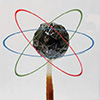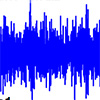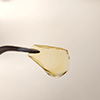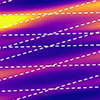Oct 20, 2023 (Nanowerk News) There’s no doubt that exercise does a body good, including strengthening and toning our muscles. But how exactly does exercise make this happen? As we run and lift and stretch, our muscles experience chemical signals from surrounding cells, as well as mechanical forces from jostling...
Artificial intelligence predicts the future of artificial intelligence research
Oct 20, 2023 (Nanowerk News) It has become nearly impossible for human researchers to keep track of the overwhelming abundance of scientific publications in the field of artificial intelligence and to stay up-to-date with advances. Scientists in an international team led by Mario Krenn from the Max-Planck Institute for the...
MXene opens way to futuristic shape-shifting speakers
Oct 20, 2023 (Nanowerk Spotlight) Speakers have come a long way from the bulky boxes and paper cones of the early 20th century. Today's high-tech versions are getting smaller and smarter, opening doors to exciting new applications. But even as modern speakers shrink, challenges remain in balancing portability, audio quality,...
Unlocking the future of high-resolution fiber optic sensing with chaotic lasers
Oct 20, 2023 (Nanowerk News) The timeliness and accuracy of the detection technology is directly related to the safety of people's lives and property, in the application of this technology, temperature is often a physical quantity that needs to be focused on. Compared with other temperature measurement technologies, Raman distributed...
Powering clean energy with chicken feathers
Oct 20, 2023 (Nanowerk News) Feathers keep chickens warm, and they might also hold the key to creating sustainable fuel cells that can power clean vehicles or water-splitting devices that extract pure hydrogen. Key Takeaways Scientists have developed a sustainable fuel cell membrane made from chicken feathers. The team extracts...
A high-speed electrical readout method for graphene nanodevices
Oct 20, 2023 (Nanowerk News) Graphene is often referred to as a wonder material for its advantageous qualities. But its application in quantum computers, while promising, is stymied by the challenge of getting accurate measurements of quantum bit states with existing techniques. Now, Tohoku University researchers have developed design guidelines...






